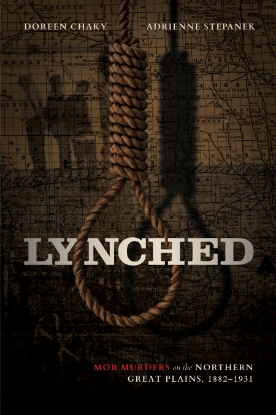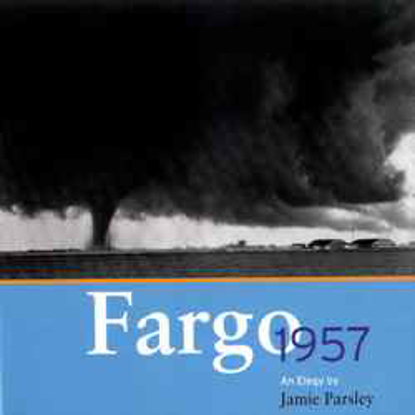North Dakota
Dakota, Or What's a Heaven For
The lives and schemes of frontier politicians, Northern Pacific Railroad executives, bonanza farmers, and homesteaders converge in the story of Frances Houghton Bingham, who marries the son of a Red River Valley bonanza farmer in order to remain near her new husband’s sister. Emotionally complex, willful and resourceful, Frances is seduced by the myths of opportunity driving the settlement of Dakota Territory, and dares to dream of a new world in which to realize her unconventional desires. Providing a counterpoint to the dramatic risks taken by Frances is the generous voice of Kirsten Knudson, the daughter of Norwegian homesteaders. As Kirsten grows from a voluble girl to a formidable woman, her observations (equal parts absurdity and insight) reveal the heart of the novel.
Lynched: Mob Murders on the Northern Great Plains, 1882-1931
With a rope and a mission, like-minded neighbors found lynching to be a simple and efficient way to obtain what they regarded as certain justice.
Northern plains lynch mobs shared a belief that what they did resulted in swift and sure justice, which the established courts would not or could not provide. Juries might be reluctant to impose the death penalty, and if a suspect were tried, found guilty, and sentenced to life in prison, they might be prematurely pardoned. Perpetrators might successfully evade punishment by using insanity pleas. With a rope and a mission, like-minded neighbors found lynching a simple and efficient way to obtain what they regarded as certain justice.
The distrust many citizens had of the legal profession seemed rooted in the perception that lawyers and the complicated law they practiced appeared to offer more justice to criminals than to crime victims. That distrust extended to jurors considered too soft-hearted to mete out appropriate punishment. Do-it-yourself justice among the lynch mobs seemed fairer and quicker than waiting for what they considered unreliable juries, lawyers, and judges. Perhaps those who disparaged lawyers and the rule of law—and sought to bypass them with a rope—simply did not understand the complexities of American jurisprudence. Based on centuries-old English common law, the court system was malleable and did respond to changing ideas and mores, but these changes came slowly. The people who made up the mobs were unwilling to patiently await such incremental adjustments.
Lynched examines the events surrounding, and the media portrayal of, nine mob murders that resulted in eleven deaths on the northern Great Plains from 1882 to 1931. Revealing a disturbing part of history, Lynched aims at uncovering the stories of these lynchings while shedding light on the volatile mentality of the communities where such injustice happened.
ISBN: 978-1-946163-59-2
Page Count: 320
Picture Count: 29 black and white images
Index: Yes
Bibiliography: Yes
Hardcover
Publication Date: April 13, 2024
Derby Girl: A Memoir
Roller derby is an odd place to strike a balance in life, but Sammi straps on her skates, adjusts her spandex, tests her center of gravity, and scores points with her no-punches-pulled memoir. Hardcover.
2018 Foreword INDIES Award Finalist in TWO categories: Autobiography/Memoir, LGBT Nonfiction; 2018 Gold Medalist in IPPY Awards for Cover Design, by Jamie Hohnadel Trosen
Devotions
Timothy Murphy's poetry explores themes of faith, family, spirituality, death, friendship, and love, all rooted in place—the Red and Sheyenne River watersheds, North Dakota, and the Great Plains. Devotions, his newest collection, revives a major but neglected poetic genre with variety and amplitude. In 200+ short poems, he explores the vicissitudes of modern spiritual life, including his passions for hunting, Scouting, and people.
Downstairs Tenant, The
Jamie Parsley’s first book of short fiction contains 15 stories (and one play) of Dakota at mid-Twentieth Century, a time when morals, ideals and society in general were in flux. Capturing the “Prairie Gothic” genre, these stories are, at turns, tender and haunting, mystical and stoically unflinching, furtive and emotionally raw, violent and humorous. These characters in them struggle with overwhelming loss, tenuous faith, persistent doubt, nagging obsessions, haunted affection and, of course, an unpredictable natural world in which they ultimately find themselves exposed and vulnerable.
ISBN - 978-0-911042-80-1
Copyright 2014
Softcover
200 pages
Fargo, 1957: An Elegy
Poetry by Jamie Parsley with 60+ black & white photos. Paperback. 172pp In the early evening of Thursday, June 20, 1957, a tornado struck the city of Fargo, North Dakota. When it was done, ten people lay dead (three more would later die from their injuries), a city was devastated and countless lives would never be the same again. Among the dead were two relatives of Jamie Parsley, a poet and an Episcopal priest, who was born almost thirteen years after the storm. In this evocative and moving elegy of the storm and its victims, Parsley, an Associate Poet Laureate of North Dakota, weaves a heartbreaking story of loss, poetry, pain, faith and, ultimately, renewal, and gives voice to those victims who, before now, were unable to speak for themselves. Fargo, 1957 is the story of the resilience and fortitude of the people who survived the storm, and those who did not.





























